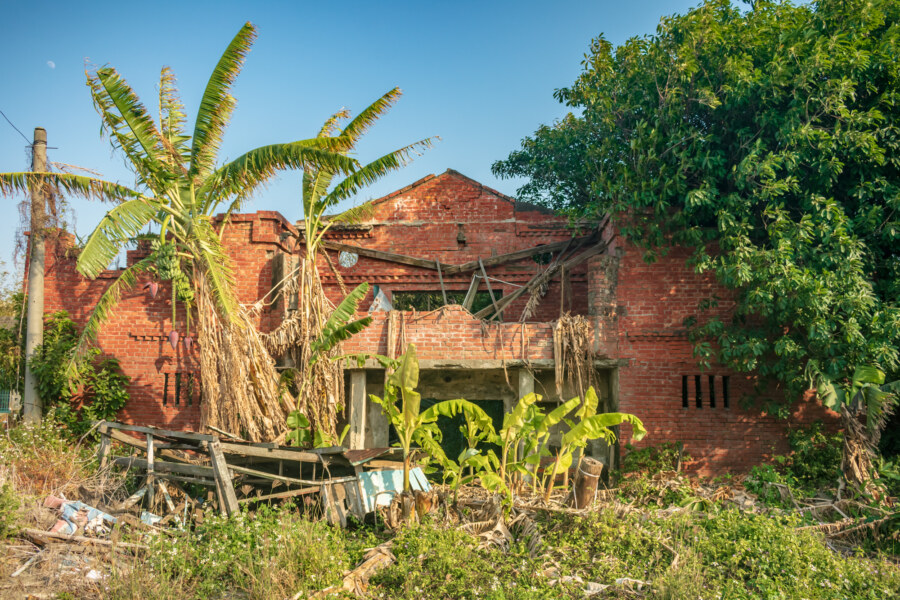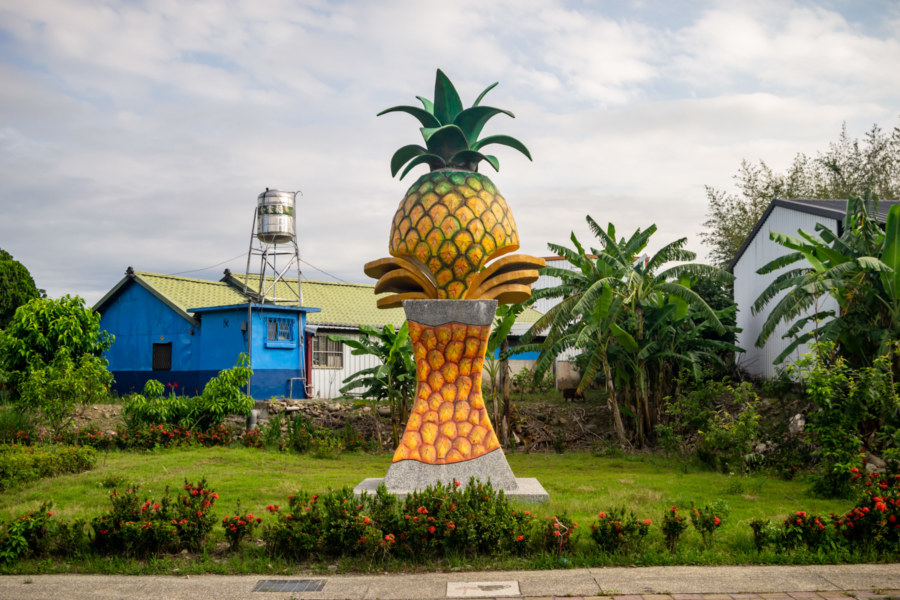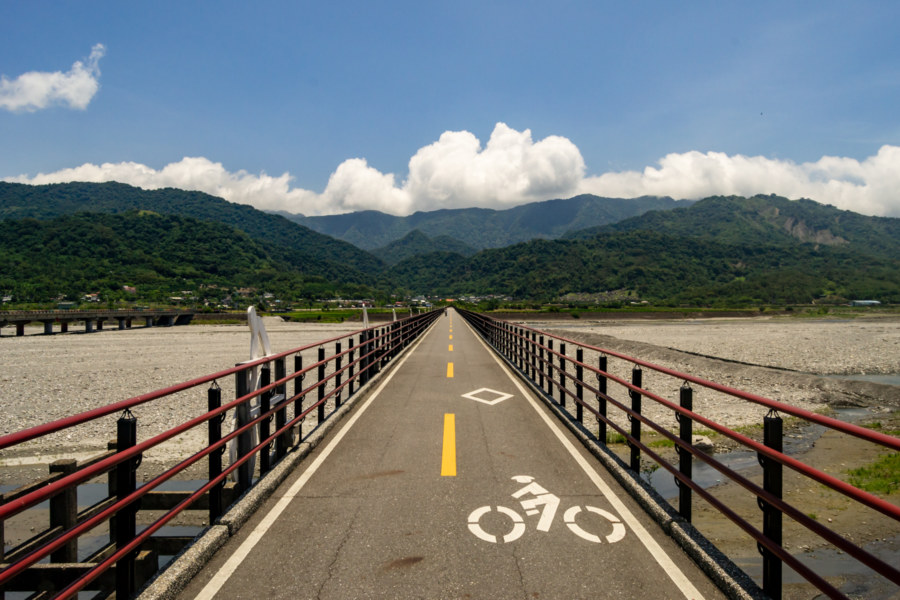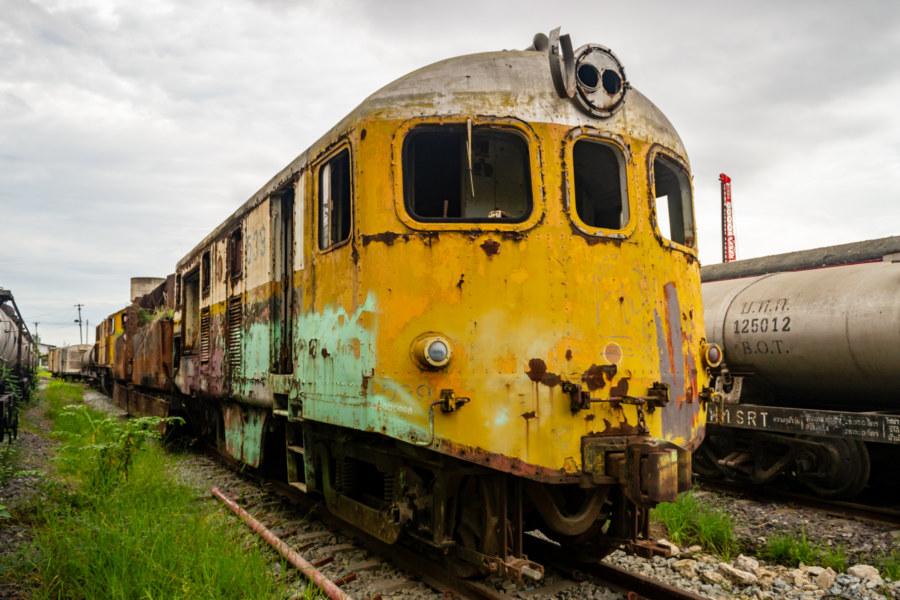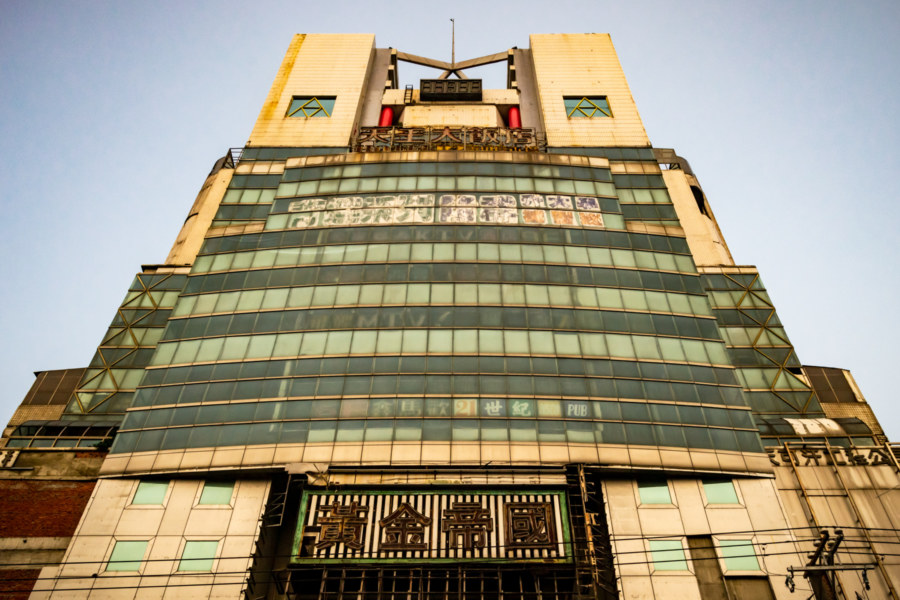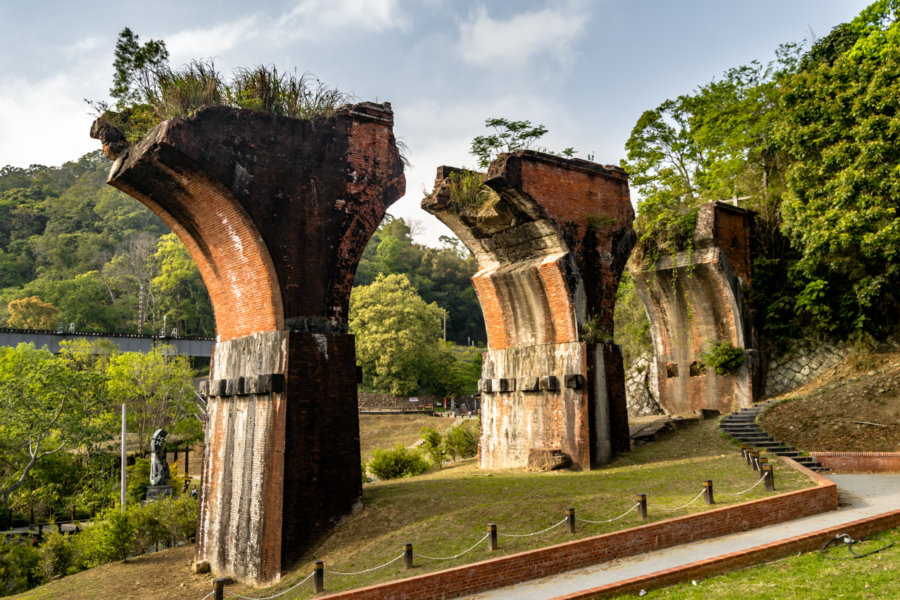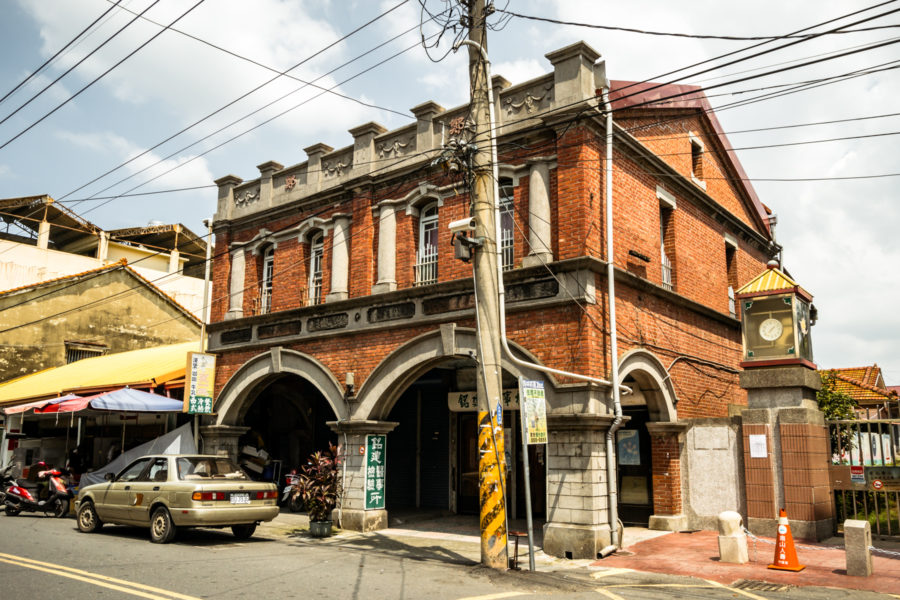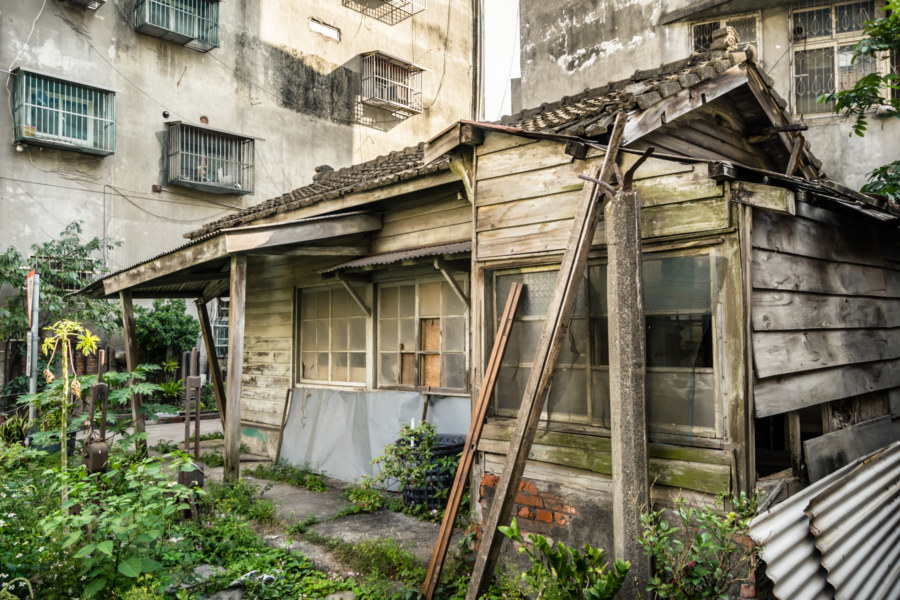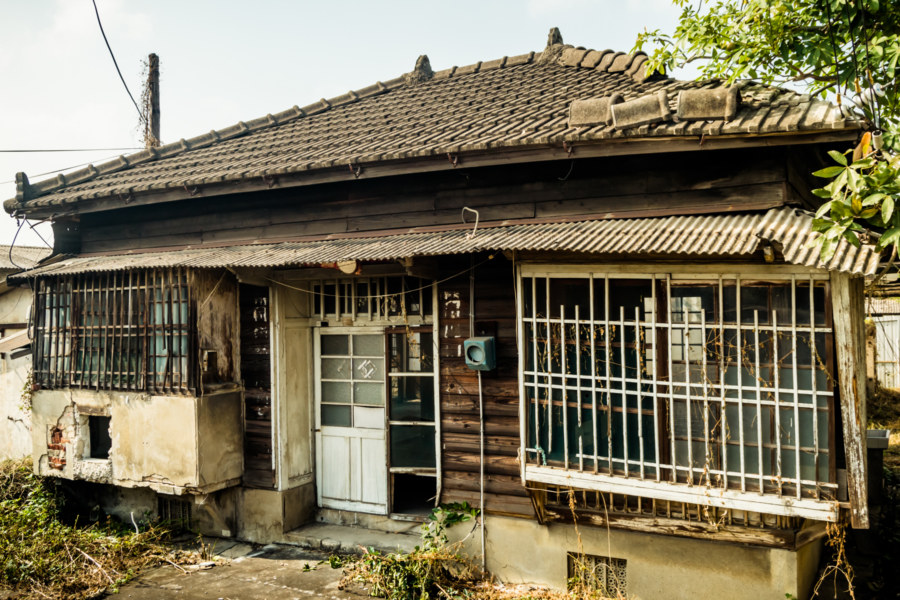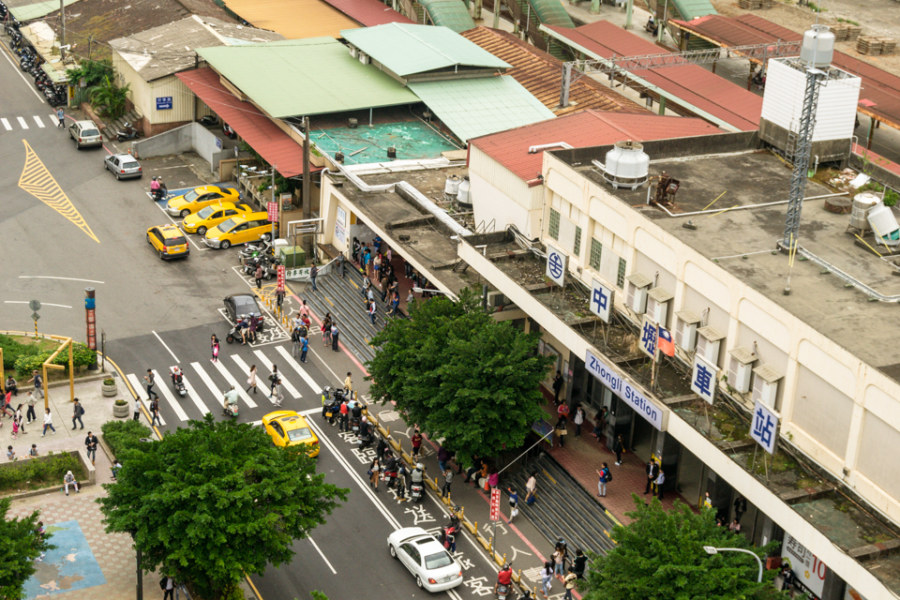The overgrown ruins of Kǒuhú Theater (口湖戲院) can be found along a dusty country road on the outskirts of Kouhu, a desolate town in coastal Yunlin, at the westernmost extent of the Taiwanese mainland. Its most distinct feature is the exposed red brick facade, which might be unique among those vintage theaters still standing in earthquake-prone Taiwan. Not much is written about this old theater online, possibly due to its obscure location in the remote countryside, but it dates back to the early 1950s and likely remained in operation into the early 1980s.
Who makes the trains run on time?
Adjacent Terms
Huadong Valley Ride 2018: Guanshan to Taitung City
My fifth day of riding the Huadong Valley in 2018 began in Guanshan and ended in Taitung City, approximately 45 kilometers further south. Although there were several uphill segments this was one of the least demanding rides of the entire trip, partly because I had a good night’s rest, but also due to some cloud cover moderating the influence of the tropical sun. After rising I cycled over to Little Star Breakfast shop (小星星早餐店) to try their fluffy handmade dànbǐng 蛋餅 (a crepe-like egg roll with various fillings). Feeling recharged, I set out to catalog more of eastern Taiwan’s historical relics and natural wonders.
Huadong Valley Ride 2018: Yuli to Guanshan
Day four of riding through the Huadong Valley of eastern Taiwan in 2018 began in Yuli, the midpoint of this bicycle trip from Hualien City to Taitung City. From the weather report I knew I’d have another challenging ride ahead—yet again the mercury was due to exceed 35 degrees. Luckily I was in no great rush, as I had allocated an entire week for a trip that experienced riders could easily manage in two days. I made good use of that extra time, making numerous stops and detours to document some of the many historic and cultural sites along the way, many of them quite obscure. I ended the day in Guanshan, slightly more than 40 kilometers down the valley.
Bang Sue Railway Cemetery
Bang Sue Railway Cemetery is located deep within a vast tract of land on the northwest side of Bangkok owned by the State Railway of Thailand. This land is home to Phahonyothin freight yard, the largest in Thailand, as well as numerous maintenance depots, engine shops, and other railway facilities. It is also the future site of Bang Sue Grand Station, set to be the largest railway station in Southeast Asia when construction is completed in the coming years. For decades the train cemetery hidden within these grounds has been known to urban explorers, so I decided to swing by and take a look while visiting in 2019.
Postcards From Yuanlin 員林明信片
Yuanlin is a modest settlement of approximately 125,000 residents located on the Changhua Plain (彰化平原) in eastern Changhua, Taiwan. It was formerly the most populous urban township in the nation, but Yuanlin was upgraded to a county-controlled city in 2015, second only to the administrative capital, Changhua City. Considerable work has been done in recent years to improve the urban environment of Yuanlin, and it feels like one of the few places between Taichung and Tainan that isn’t falling into disrepair and emptying out. That being said, urban decay remains widespread in Yuanlin, and there are many interesting ruins worth exploring before they disappear. For students of city planning and development this compact city also has quite a lot to offer—and in this post I aim to introduce some of its more intriguing features, mainly drawing upon photographs from 2013 to 2015, when I was spending significant amounts of time in the area.
Longteng Broken Bridge 龍騰斷橋
Lóngténg Broken Bridge (龍騰斷橋) is a historic roadside attraction in the rolling hills of Sanyi in southern Miaoli, Taiwan. More formally known as Yúténgpíng Broken Bridge (魚藤坪斷橋), it was originally constructed in 1907 during the Japanese colonial era, connecting Zhunan and Taichung along what is now known as the Old Mountain Line (舊山線). The bridge collapsed during the devastating 1935 Hsinchu-Taichung Earthquake but the ruins were never cleared away. Further damage was done in the 921 Earthquake in 1999. Several years later, in 2003, it was designated a historic site by the county government and subsequently developed for tourism along with the former Shèngxìng Railway Station (勝興車站).
Postcards From Ershui 二水明信片
Ershui is a rural township located in the southeastern corner of Changhua, bordering Yunlin and Nantou. Ershui Station 二水車站, constructed in 1935, is the primary point of transfer between the Main Line 縱貫線 of the Taiwan Railway Administration (TRA) and the Jiji Line 集集線, a tourist railway leading into the interior. Ershui, which literally means “two water”, is named after the Bābǎo Canal 八堡圳, an extensive system of artificial waterways still responsible for irrigating much of the Changhua Plain 彰化平原 three centuries after it was devised. During the Japanese colonial era this small town prospered as a center of woodworking while farmers in the countryside cultivated bananas, grapes, guava, and tobacco, among other crops. Nowadays it is mainly known as a sleepy stopover on the way to parts beyond—but a closer look will reveal several points of interest for anyone curious about Taiwanese history, architecture, and vintage style.
South Yuanlin Station 南員林站
South Yuanlin Station 南員林站 is an abandoned Japanese colonial era railway station located not far from the newly reopened Yuanlin Station 員林車站 in the heart of Yuanlin, a mid-sized city in central Changhua. It opened in 1933 as a small stop on the now-derelict Yuanlin Line 員林線 of the Taiwan Sugar Railways 臺灣糖業鐵路, which ran due west across the Changhua Plain 彰化平原 for approximately 9 kilometers to the Xihu Sugar Factory 溪湖糖廠 in Xihu. Apart from facilitating the transport of sugarcane and other cargo this old wooden station also provided passenger service until it was abolished sometime around 1976.
Wuri Stationmaster Residence 烏日車站舊站長宿舍
The old stationmaster’s house in Wuri has been left to the elements for years. When will the city get serious about protecting its cultural heritage?
Today I breezed through southern Taichung on my way to the high-speed rail station and parts beyond. Along the way I made a brief stop in Wuri to follow up on a lead I uncovered while researching my much longer feature about the historic Japanese colonial era Wuri Police Station. Apart from the police station there are two other officially designated historic sites in the district (with nearby Jukuiju Mansion almost certain to become the fourth in the near future). One of these is the former Stationmaster Residence (站長宿舍) next to Wuri Station (烏日車站), pictured here. Despite its status as a heritage property the city has done nothing to restore it and little to maintain the old residence. About all they’ve done in recent years is put up metal fencing sturdy enough to prevent the intrusion of mildly curious explorers such…
Postcards From Zhongli 中壢明信片
I resided in Zhongli, Taoyuan, for two months at the very end of 2015 for reasons outlined in my first dispatch. In short: I wanted to try out living in another city in Taiwan and had a few good friends in the area, one of whom is fellow Canadian blogger Josh Ellis. In my time in Zhongli I captured numerous scenes from everyday life in this burgeoning conurbation of half a million. This post is meant to convey a sense of what it was like to live there for a while—just as I previously did for my time in Wenshan District, Taipei. It is not meant to be a comprehensive guide or a review; think of this as a loose collection of snapshots and impressions of a mid-sized Taiwanese city not commonly documented in English.
